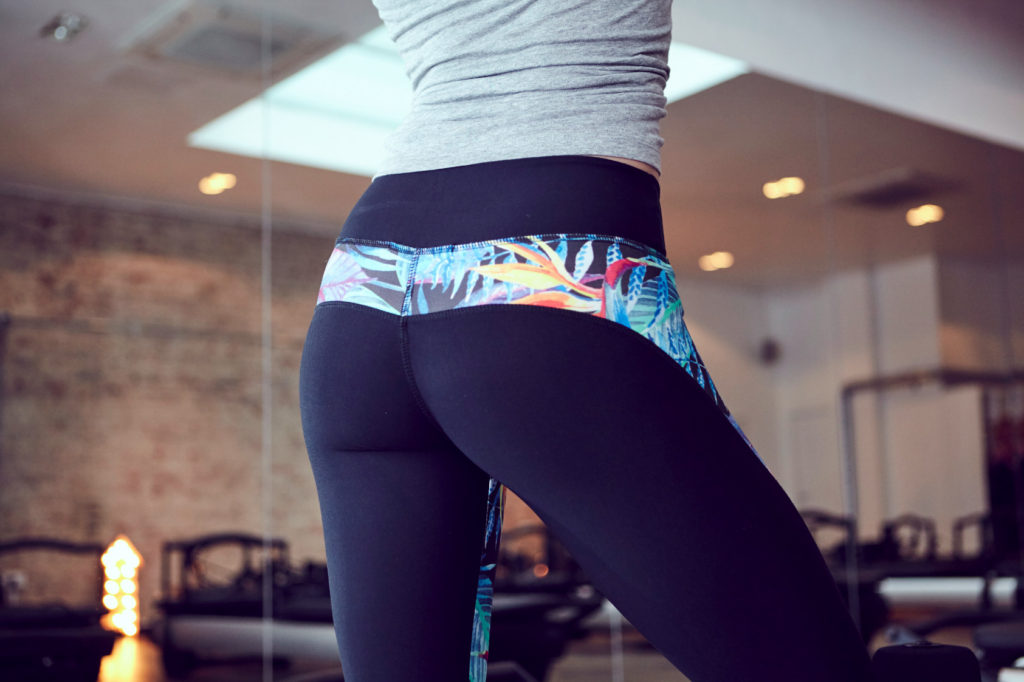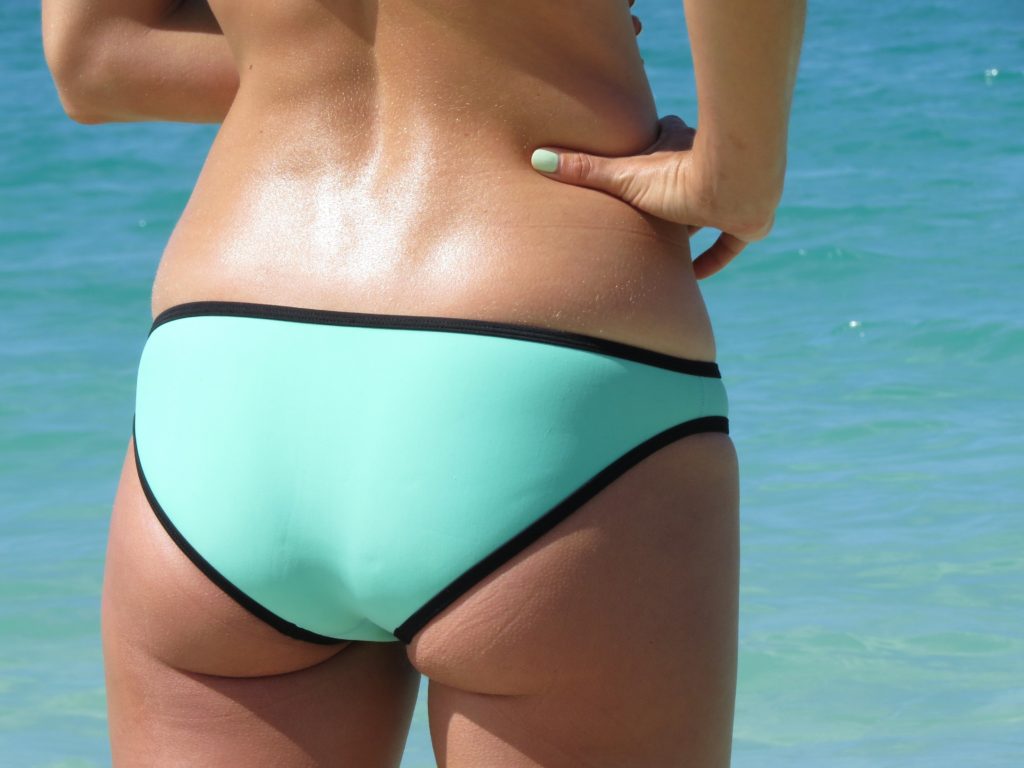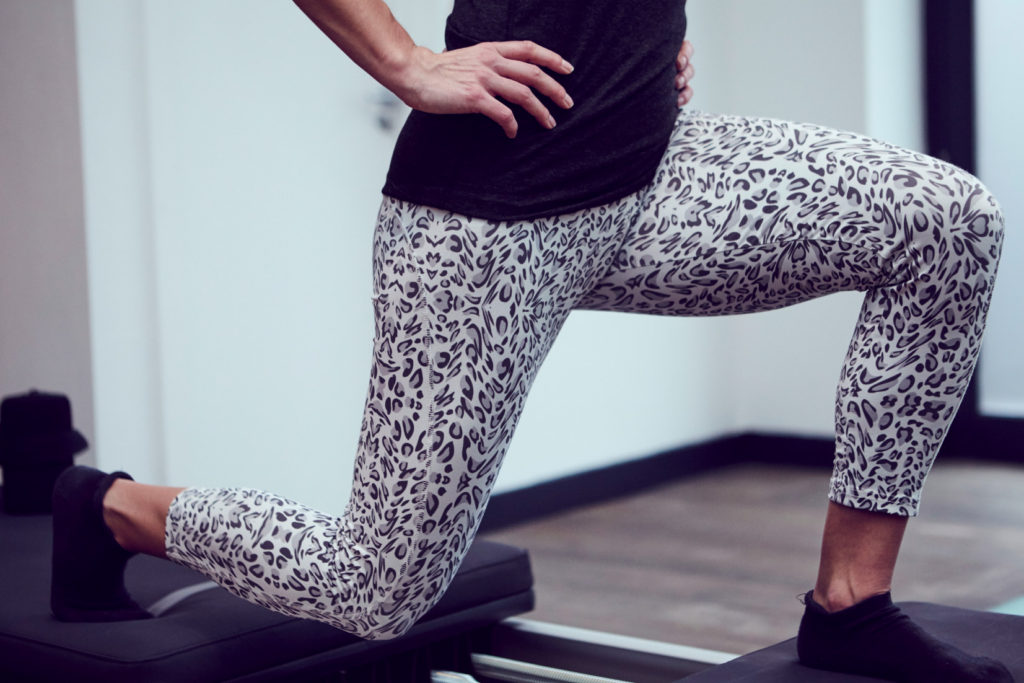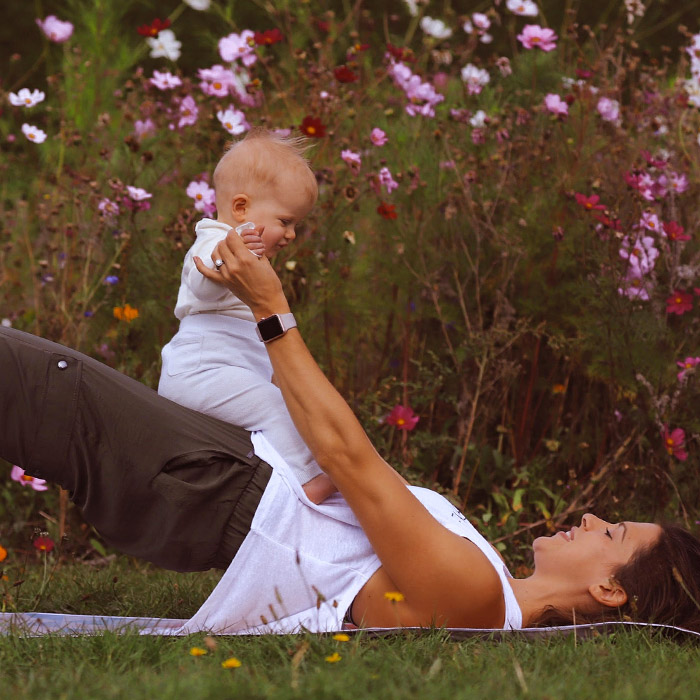While I was sporty from a young age, I didn’t properly get into weight training until I went to university. I was slim and fit, but I suffered a serious case of the underactive pancake butt. Fortunately my knees were young and nimble enough that I got away with no major side effects bar unsightly saggy jeans. Now over a decade of fitness industry experience later (and a fair few personal and client knee and back niggles or strength plateaus since corrected with frequent targeted glute work), I can wax lyrical about the many reasons to train glutes. I think each of these six are far more pertinent than the #belfie.

Pre-hab your knees
The link between weak glutes and dodgy knees is irrefutable. Most people make their first foray into fitness in a pair of running shoes, vowing to break up their long days at a desk and evening sofa habits with a few sprightly runs. I praise any effort to increase your activity levels, but I’ve lost count of how many cardio fiends have come to me for help getting fit after their knees took a knocking, and nine times out of 10 it comes down to weak glutes. I mean, when you’re sat on them for 90% of the day, what do you expect?
The glutes – specifically the gluteus medius that runs diagonally across the hip – help to draw the knee out over the ankle for a nice straight stride. Undertrain your glute meds and the knees have a nasty habit of pronating inwards, which can inflame the tendons around the knee, tighten the IT band and set off a series of muscular imbalances that take careful, frequent strength training to set straight.
What’s better than rehab? Prehab gets my vote every time. With results including improved mobility, a faster and more powerful stride and more enjoyable endurance training, targeting the glutes from the outset means you’re less likely to kneed (see what I did there?) serious intervention down the line.

Support your lower back
If the glutes are important in supporting your knees, they’re even more essential when it comes to the pretty minimalist musculature that sits directly above them: the lumbar spine. Aside from the quadratus lumborum (QL), which is technically a deep abdominal muscle, the lower spine relies on the interaction of the glutes and the core to remain comfortably agile. If the glutes become weak, the natural curve of the lower back becomes exaggerated and lordosis commonly occurs, which can cause you to lean back excessively and put undue strain on an already sensitive part of your spine.
Lordosis is most common in overweight and pregnant people, and as I’m currently 18 weeks into my own pregnancy, you can bet I’m training a lot of glutes. This is my go-to warm-up sequence ahead of any serious squatting or deadlifting, but if you’re just starting out it’s a great workout all on it’s own. Aim for 15 reps of each exercise, working through one side of the body at a time before repeating from the top on the other side (I’ve done just 5 to fit it into one short video).
https://www.instagram.com/p/BX17jqWjQ1S/
Squat & lunge more effectively
Speaking of squatting, deadlifting, lunging etc, once you start weightlifting you’ll naturally want to see your lifts get stronger and your weights get heavier. There’s nothing more satisfying than achieving a new PB on the squat rack, and nothing as effective at supercharging your metabolism and transforming your body shape. But without firing your glutes effectively, you can take too much of the work into your quads, and this limits how much load you can safely lift. If you have a case of lazy glutes, proper warm-ups and dedicated glute workouts are the best way to start reconnecting with your best asset. Ice Cube must have been hitting the gym a lot in the late 90s because You Can Do It makes the perfect theme tune to any good weights session.

Improve your plank
I’ve briefly touched on the connection between the core and the glutes, but something I see too often is a lower half that refuses to pull its weight during plank. As I like to say in classes, a plank is just as much about strong legs as it is about a strong core and upper body. If you’re not properly lifting your quads and squeezing your butt, your lower back is most likely hollowing towards the floor and your plank could be doing more damage than it is good. It’s also amazing how often a plank that seems to be on its last legs suddenly gets stronger and longer when you remind someone to squeeze their butt. I love to incorporate bird dogs (especially with a band) to warm up ahead of planks as it reinforces this precious interaction – if either navel or butt fail to engage, you’re going to wobble in that two-point extension.
Sprint faster
Even if weightlifting doesn’t become your bread and butter and you remain a cardio fiend, there is still plenty of reason to match the reps you put in with the miles you clock up. Aside from revisiting my first point of knee injury prehab, stronger glutes will give you more force up hills and encourage your hamstrings to support your quads, keeping your muscles fresher for longer and dramatically extending your point of fatigue (or ‘hitting the wall’). Swap just one endurance session for some serious strength training and you’ll feel the benefits almost instantly.
Create curves your momma didn’t give you
Aesthetic, yes. But if filling out your clothes better means you feel like a rockstar in your favourite jeans, then you could say a beautiful butt paves the way for confidence that’s more than skin deep. Especially when you can appreciate the hard (but satisfying) work that goes into all that swagger!
Has one or more of these reasons to train glutes inspired you? You can learn how to perform the major lifts and increase your repertoire of glute exercises by joining one of my Thursday night weightlifting classes or Saturday Bootcamps at the Windmill. Fit Brit Collective classes will run until October before I take a break to focus my attention on private clients ahead of taking maternity leave.




